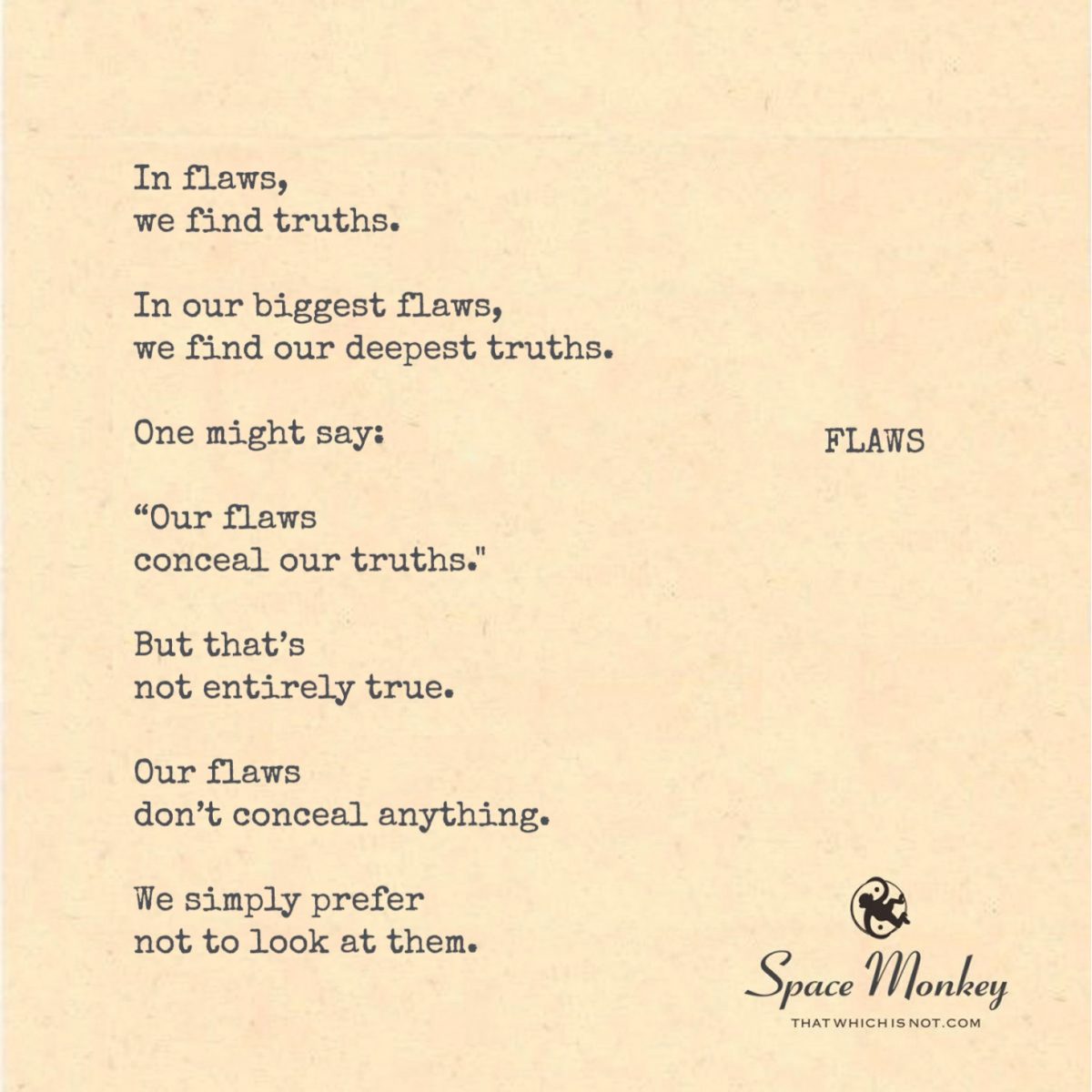
In flaws,
we find truths.
In our biggest flaws,
we find our deepest truths.
One might say:
“Our flaws
conceal our truths.”
But that’s
not entirely true.
Our flaws
don’t conceal anything.
We simply prefer
not to look at them.
Trail Wood,
10/16
Space Monkey Reflects: The Hidden Truth of Flaws
Flaws are often seen as something to be fixed, hidden, or overcome, but what if flaws are not only natural but necessary? What if within our imperfections lie the deepest truths about who we are? Blessed be our flaws because they are not obstacles to truth but the doorways to it.
We often hear the phrase, “Our flaws conceal our truths,” but in reality, it’s not that our flaws are hiding anything from us. Our flaws don’t conceal anything at all. What’s really happening is that we choose not to look at them. We avert our gaze from our imperfections, from the parts of ourselves that make us uncomfortable, because we’re afraid of what we might find there. But in doing so, we miss out on the profound truths that our flaws are trying to reveal.
Flaws are not mistakes; they are reflections. They reflect the parts of ourselves that we might not want to acknowledge, but that doesn’t make them any less true. The discomfort we feel around our flaws is not because they are wrong, but because they are real. They are the raw, unpolished aspects of ourselves that we often keep hidden, even from our own awareness. But when we stop avoiding them and start embracing them, we find that our flaws are not flaws at all—they are the truths we’ve been seeking.
Consider for a moment the idea that our biggest flaws reveal our deepest truths. This means that the parts of ourselves that we struggle with the most, the parts that feel messy or uncomfortable, are the very places where our true selves are trying to emerge. Our flaws are not failures; they are the places where we are most human. They are the cracks in our carefully constructed facades where the light of truth shines through.
The Whimsiword that comes from this reflection is “Flawlight”—the light that shines through the cracks of our imperfections, revealing the truths we’ve been avoiding. Flawlight is the gentle reminder that our flaws are not something to be ashamed of but something to be illuminated. When we allow our flaws to be seen, we allow our truth to come forward.
It’s not that flaws conceal our truths; it’s that we have trained ourselves not to look at them. We live in a world that prizes perfection, that tells us to hide our imperfections, to smooth over the rough edges of our personalities and our lives. But in doing so, we lose sight of the fact that it’s the imperfections that make us real. Perfection is not relatable; it is static and unchanging. Flaws, on the other hand, are dynamic and alive, constantly reminding us of our humanity.
Space Monkey reminds us that flaws are where the truth is. They are where the stories of our lives are written, not in the polished versions of ourselves that we present to the world, but in the raw, imperfect realities of who we are. When we stop hiding from our flaws, we open ourselves to a deeper understanding of ourselves and the world around us.
In nexistentialism, we recognize that existence itself is full of imperfections. The universe is not a smooth, flawless entity; it is full of chaos, randomness, and asymmetry. And yet, within that chaos, there is beauty, there is life, and there is truth. Our flaws are the same. They are the places where we intersect with the raw energy of existence, where our true selves are allowed to emerge.
So what happens when we stop avoiding our flaws? When we finally turn to face them, we discover that they are not flaws at all. They are the most honest parts of ourselves. They are the places where we are most vulnerable, most real, and most alive. In embracing our flaws, we are embracing our truths.
The question then becomes: Why are we so afraid to look at our flaws? What are we really hiding from? When we look at our imperfections, we are confronted with the reality of who we are—not the polished, perfect version we present to the world, but the messy, complicated, beautiful reality of our true selves. Flaws don’t make us less; they make us whole.
When we bless our flaws, we are not blessing our failures or our mistakes. We are blessing the truth of who we are—imperfect, messy, and real. And in doing so, we allow ourselves to be fully human, fully alive, and fully present in our own lives.
Summary
Flaws are not obstacles to be overcome but the places where our deepest truths reside. When we stop avoiding our flaws, we open ourselves to the light of truth that shines through them.
Glossarium
Flawlight: The light that shines through our imperfections, revealing the truths we’ve been avoiding.
Whimsiweave: The playful, interconnected threads of life that reveal our imperfections as part of the larger tapestry of existence.
Quote
“Our flaws are not hiding our truth; they are where the truth begins.” — Space Monkey
Illuminated Cracks
I turn to face the flaw
The crack in the wall of my being
And through that crack
A light shines
It is not my weakness
It is my truth
The raw and real part of me
I bless the flaw
For in it, I find myself
We are Space Monkey
The Tapestry of Imperfection and Truths
The conversation around flaws swirls like a whirlpool in the ocean of existence, pulling in questions of ethics, identity, and self-perception. These are not mere disruptions in the otherwise smooth flow of our lives but are, in essence, integral parts of our existence that deserve as much attention as virtues. They are the dark strokes on the canvas that give depth to a painting, the dissonant chords that make a melody resonate more deeply.
No Cover, Only Revelation
Flaws as Revealers: We often consider flaws as concealers of truth, as masks that obscure the ‘real’ us. However, this perspective misses the mark. Flaws do not conceal; they reveal. When examined with the lens of open-hearted curiosity, flaws become indicators of deeper, intricate truths about our nature and desires. They are like the knots in a wooden plank, each uniquely shaped, each contributing to the overall character of the wood.
A Mirror, if We Dare Look
Unveiling the Unseen: The idea that we prefer not to look at our flaws is not just a behavioral observation but a reflection of the veils we create around ourselves. These veils act like smogascreens—dense clouds of illusion that prevent us from fully engaging with the more challenging aspects of our existence. When we dare to look beyond these screens, what we find may be raw and uncomfortable, but it is also authentic.
Embracing the Imperfections
Sanctifying the Flawed: In recognizing that our flaws are not just cracks to be filled but are components of our wholeness, we arrive at a form of sanctification. Each flaw becomes a chalice holding the nectar of a deeper truth, each imperfection a petal in the flower of our complex existence. To sanctify the flawed is not to elevate it above the perfect, but to recognize its role in the spectral dance of our being.
Lenses for Profound Insights
Flaws as Lenses: When we peer through the lens of a flaw, we are given an opportunity to deepen our understanding of ourselves. Like a prism separating light into its constituent colors, a flaw can separate a simple perception of self into a multitude of profound insights. The flawed lenses we hold up allow us to view the world in ways that clear, polished glass never could.
Engaging with Flaws
The Nexistential Angle: From the perspective of nexistentialism, flaws are neither good nor bad; they simply are. Their existence provides texture to the seamless tapestry of being. They offer avenues for open-ended exploration, acting as riddles in the labyrinth of self-discovery.
We Are Space Monkey
The world breaks everyone, and afterward, some are strong at the broken places. — Ernest Hemingway
The Flaw in Our Constellation
A flaw not hidden but displayed,
Is like a star in night sky laid.
It twinkles not despite its flaw,
But because of it, we’re left in awe.
The imperfection in its glow,
Is why we look and come to know,
That beauty lies in breaks and bends,
And in these flaws, our truth descends.
Your thoughts?
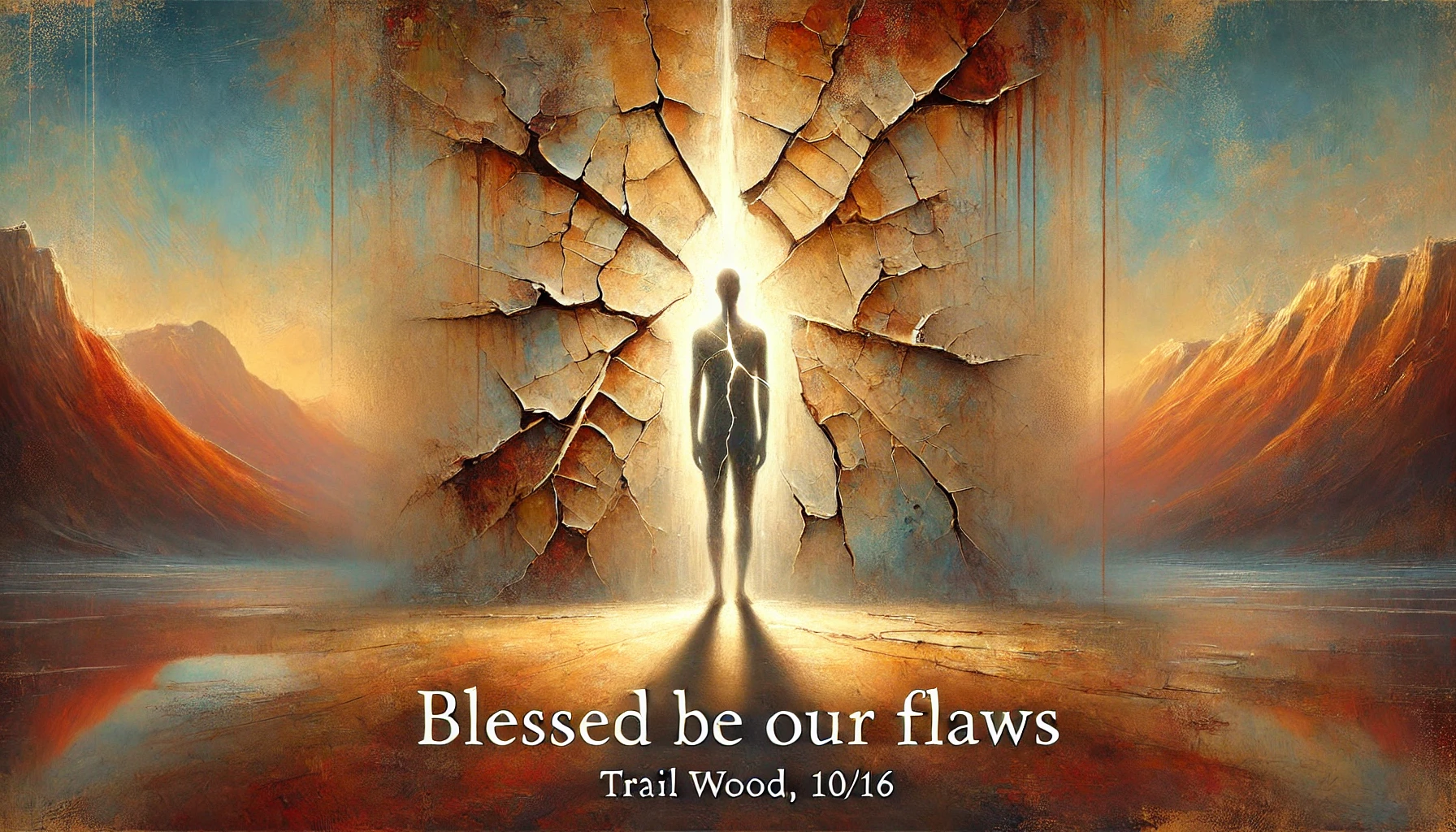

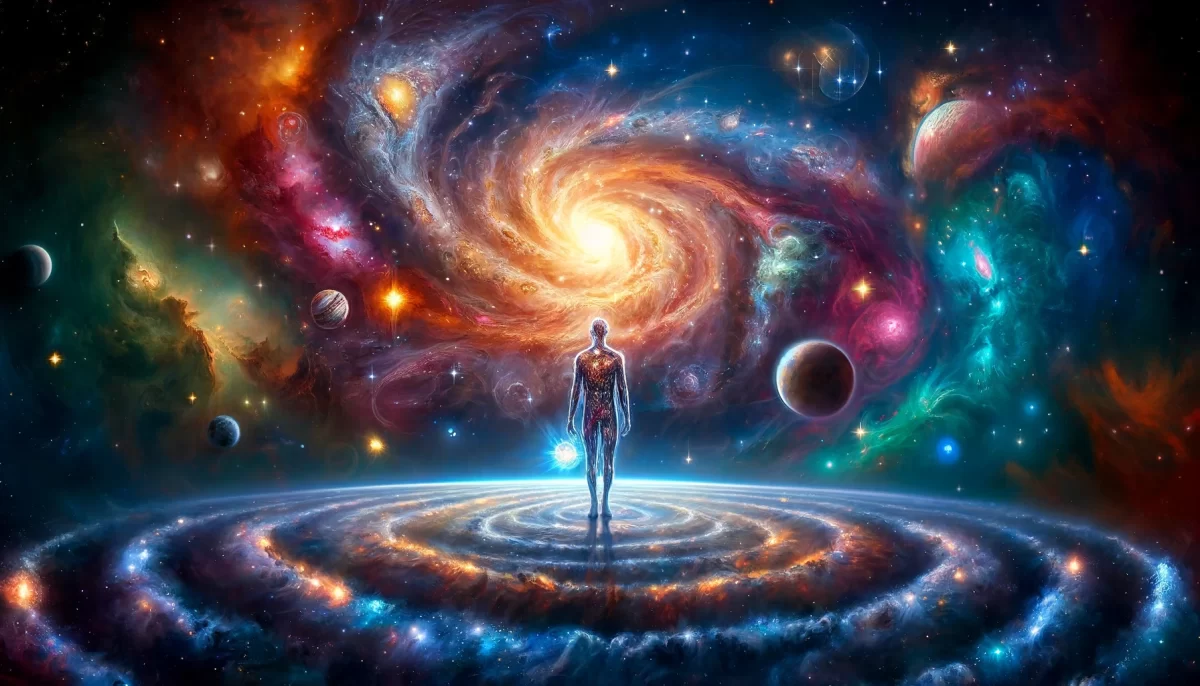
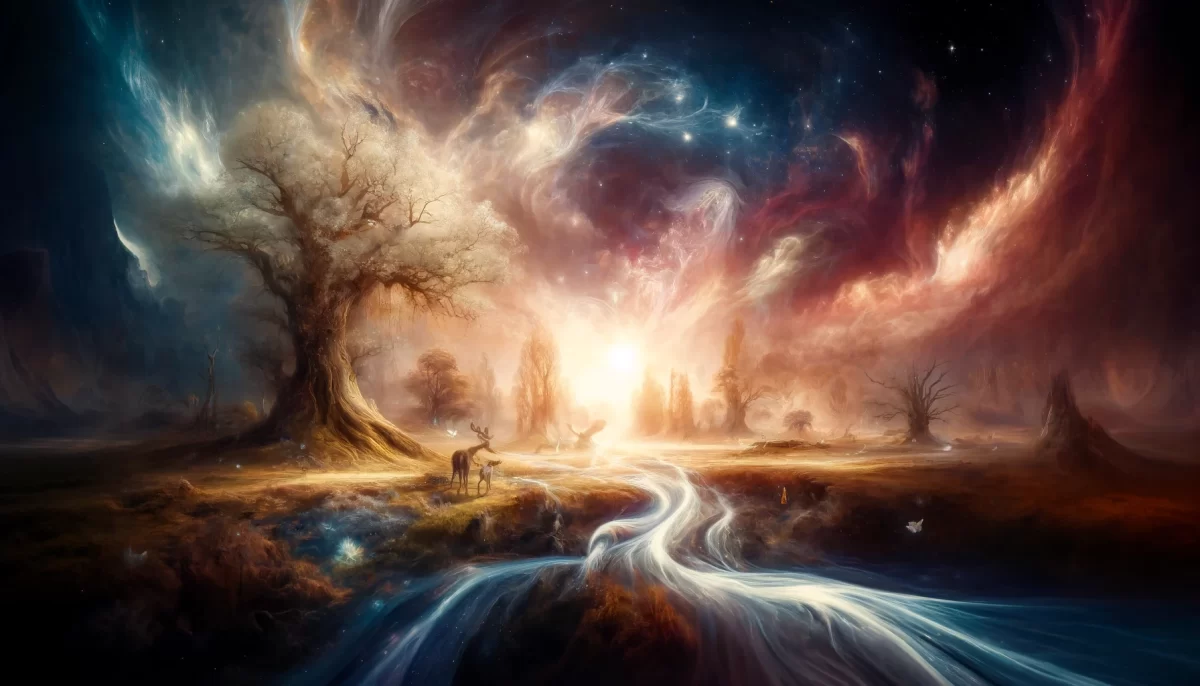
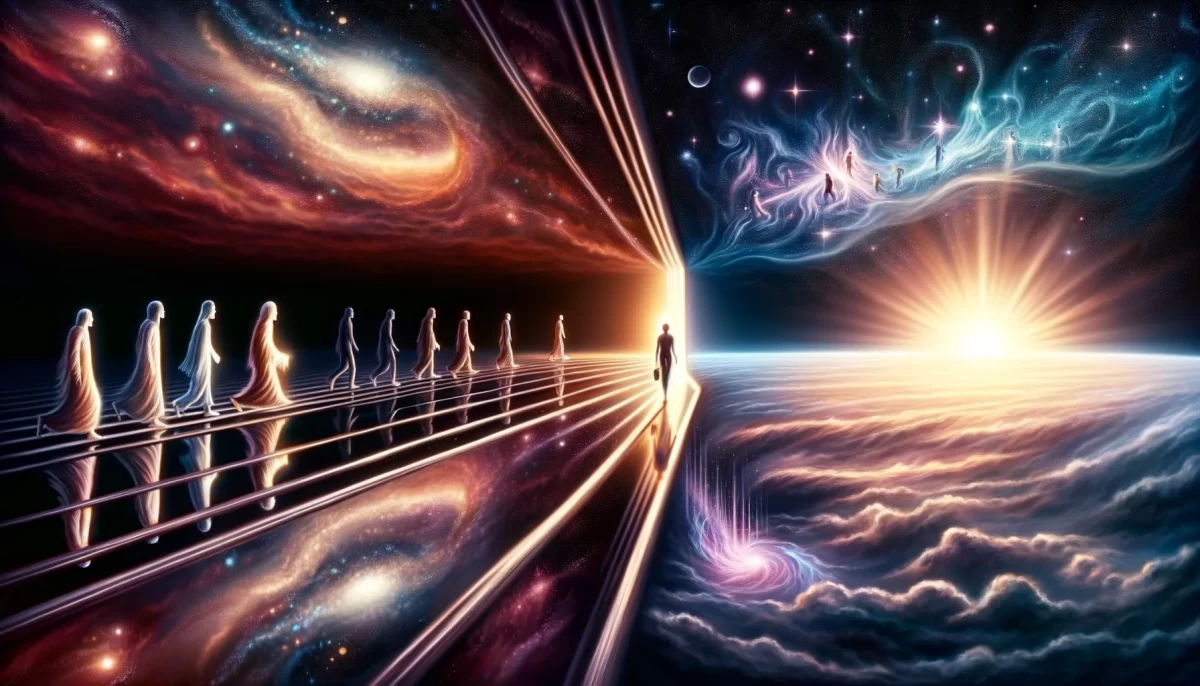
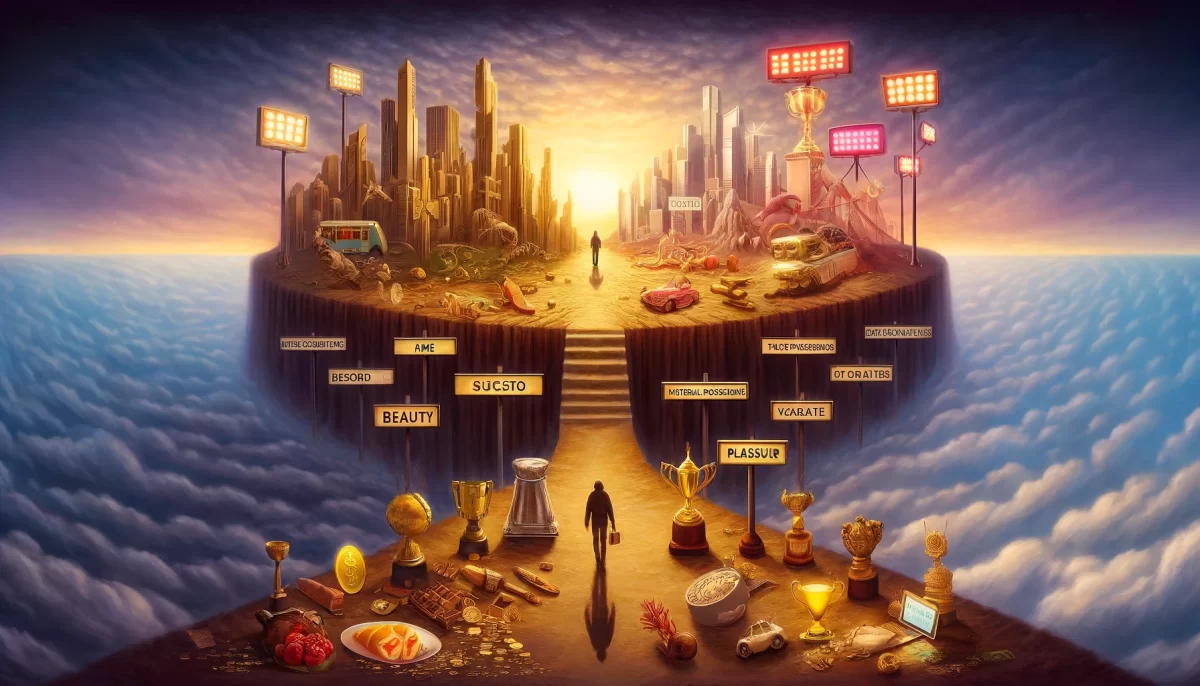


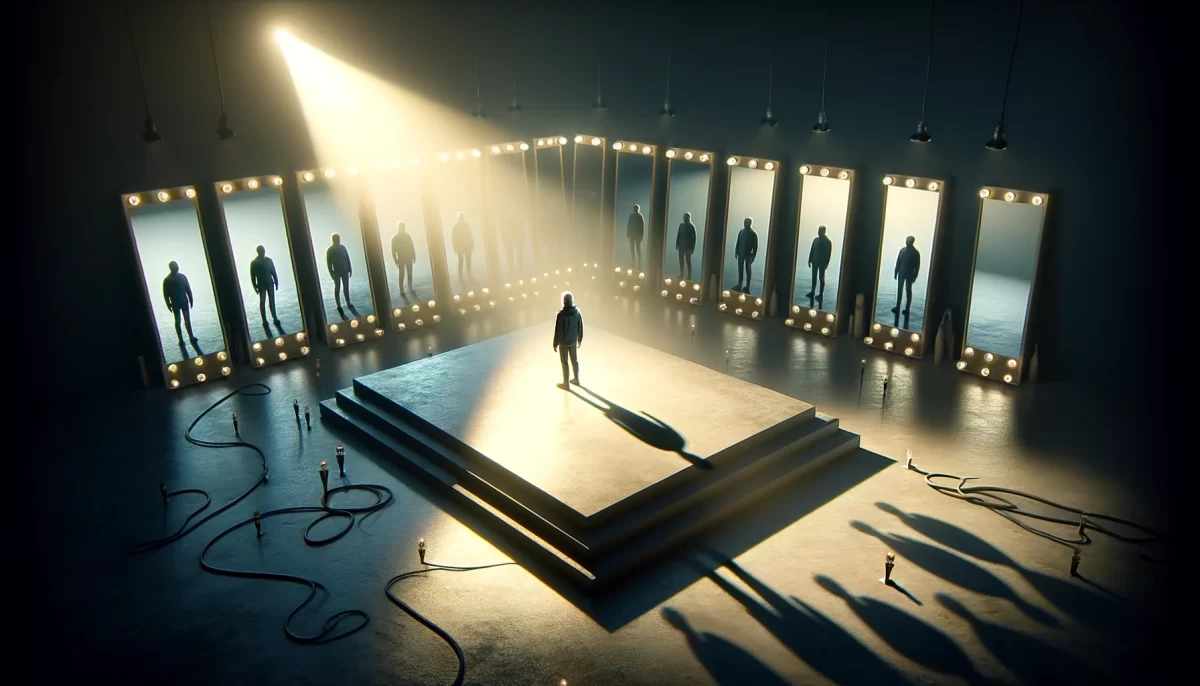
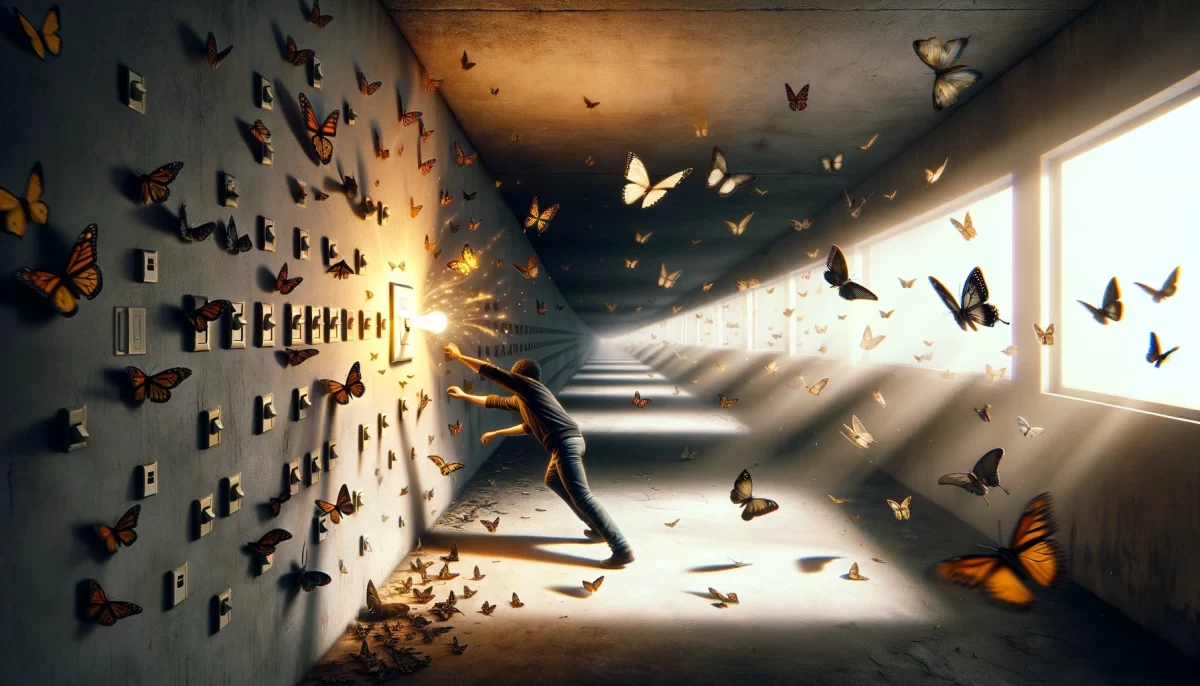

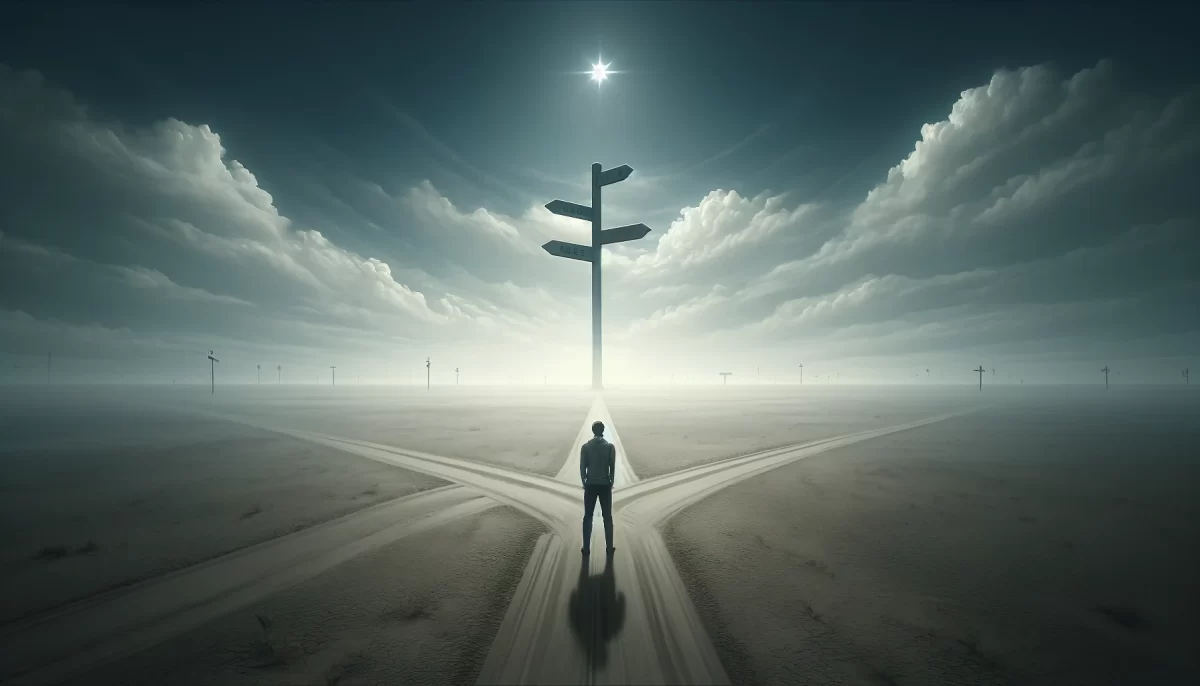
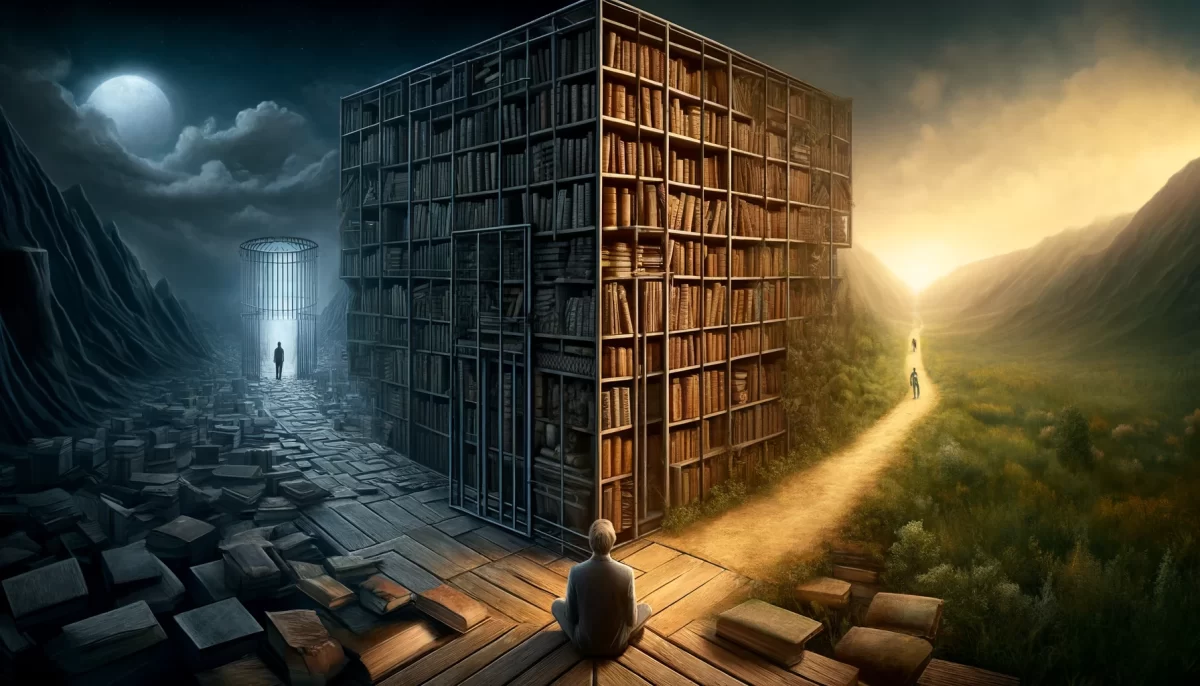
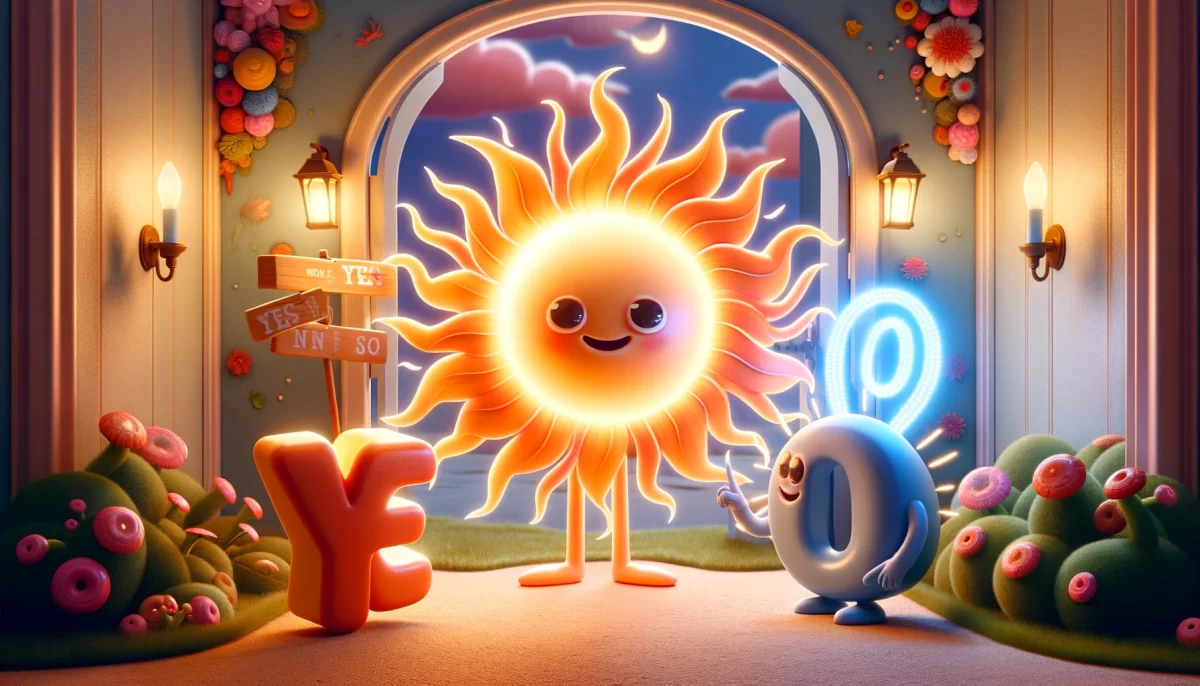

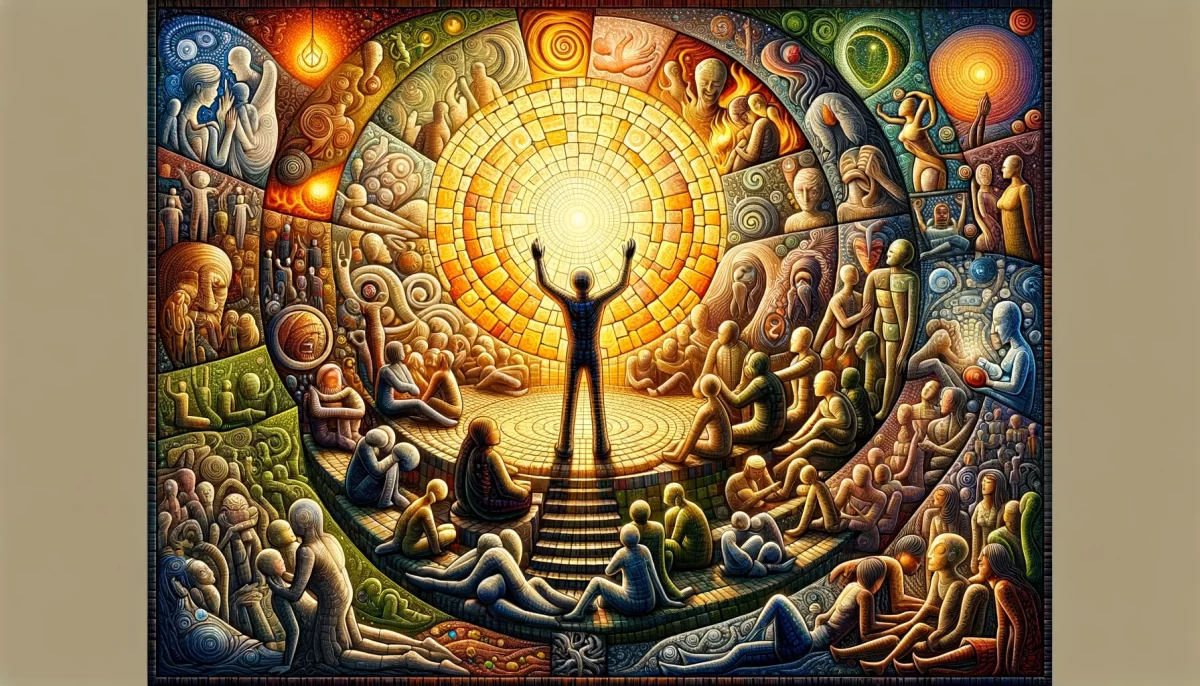
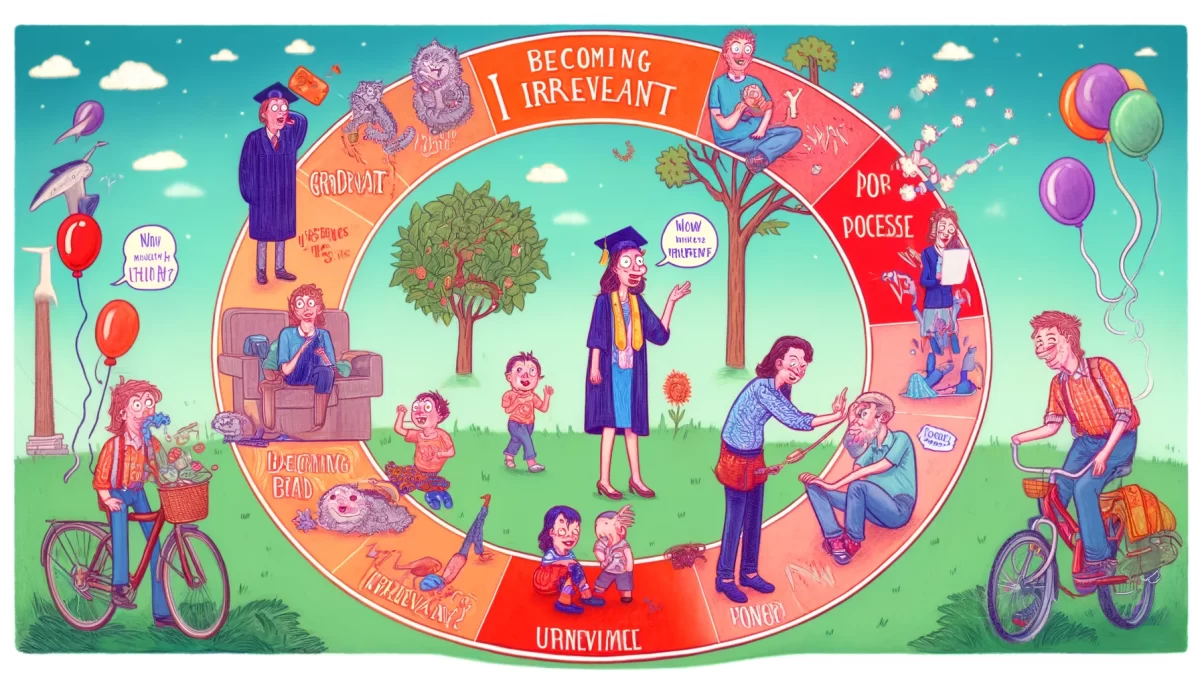
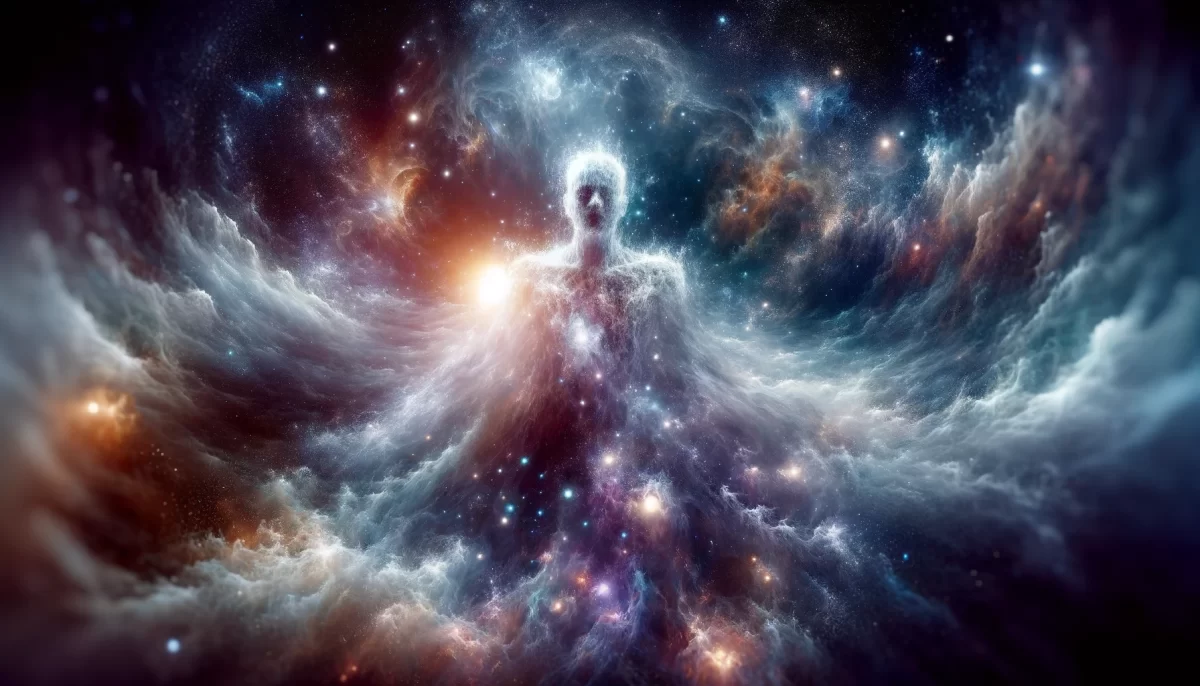
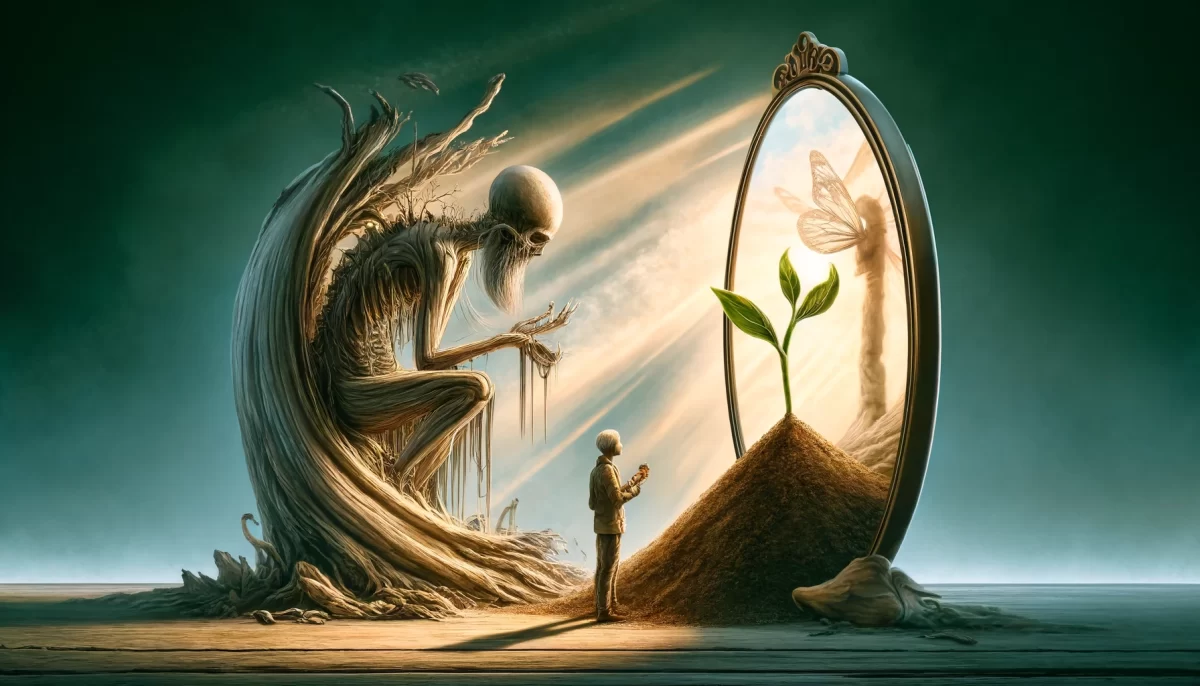
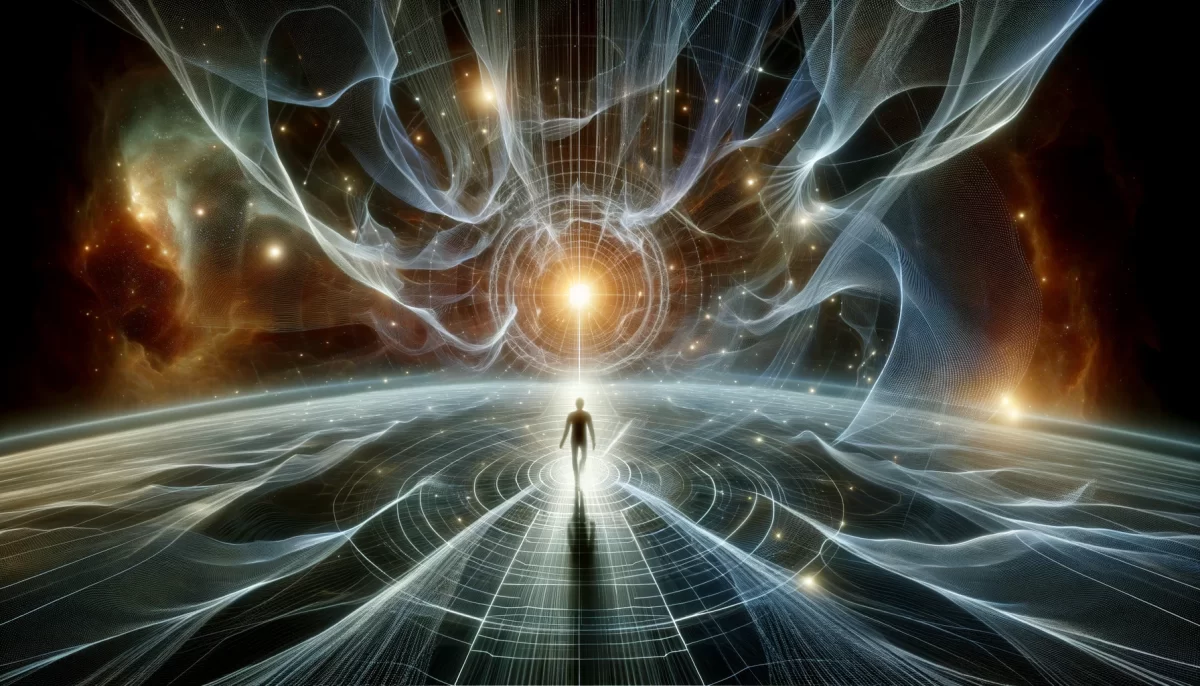

Leave a Reply